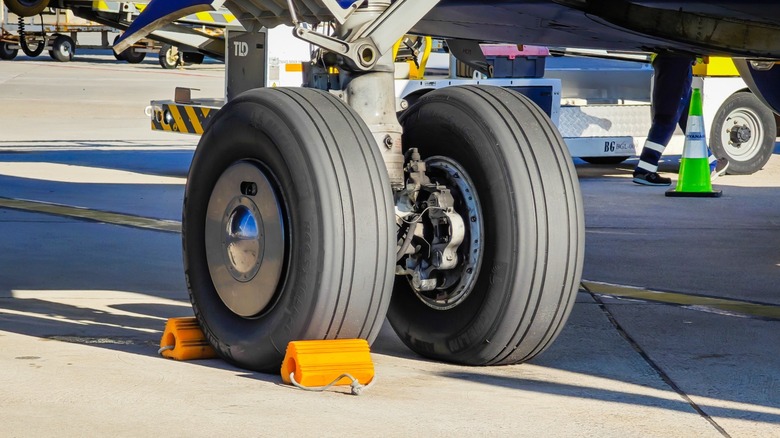Do Airplanes Use Disc Or Drum Brakes?
Aircraft braking is a highly specialized system. After all, it is designed to stop enormous momentum safely and efficiently. Unlike car brakes, aircraft brakes must handle extreme forces during landing, where tons of weight meet the runway at high speed. This requires systems engineered for performance under intense heat and stress. As such, it's not easy to wrap our heads around how the brakes on a commercial jet work.
Aircraft can use either disc or drum brakes, but modern aircraft use disc brakes almost universally. As such, knowing the difference between disc brakes and drum brakes is important. By design, disc brakes use an exposed rotor clamped by brake pads inside a caliper. The rotors and stators of disc brakes are more advanced than drum brakes, being lighter and easier to service. They also deliver stronger and more consistent braking.
Drum brakes are less powerful relics of 1950s designs, using drums mounted on the wheel hub. Unlike disc brakes, drums use brake shoes, a wheel cylinder, and springs to generate the friction that halts the wheel. They have been phased out for their poor heat performance and weight issues. But what else distinguishes a disc brake from a drum brake, and why are drum brakes not used anymore?
Getting to know an airplane's brake configuration
Disc brakes are a major improvement on drum brakes, consisting of metal discs called rotors and stators attached to the wheel hub. Rotors move with the wheel while stators remain fixed to the brake housing. Together with calipers, they create friction. Disc brakes also use an open design, meaning they are exposed to air. This makes them much better at cooling. Drum brakes use an enclosed design, which means cooling becomes a problem, especially at high speeds or heavy loads. This poor heat dissipation was central to drum brakes being phased out.
Disc brakes are now the preferred option on aircraft. The disc brake configurations depend on the aircraft size and braking needs. Single‑disc brakes are commonly used on small, light aircraft. Each wheel has one rotor attached to the wheel hub with pistons and brake pucks in the caliper to press on both sides. Dual‑disc brakes feature on medium‑sized aircraft. They use two rotors with linings between them in a carrier. When pistons press, both discs get clamped simultaneously for greater friction and torque. Then there are multiple‑disc brakes for heavy jets. They use stacks of alternating rotors and stators. Hydraulic pistons compress the whole pack, generating massive friction. This is ideal when stopping an enormous mass.

